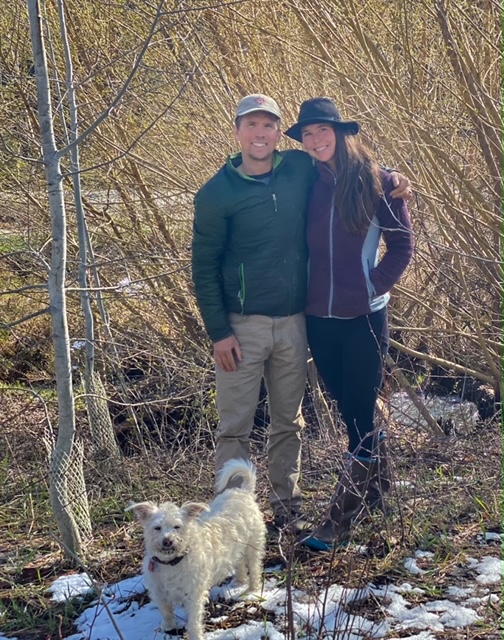How did you hear about the 123 fuels reduction program and what about it made you want to participate?
I heard about the program from the CWSC and the DNR. I’ve been doing forestry work on my own property under a 50% cost share with the DNR for three years. Given the extreme slope, lack of access and the density of my forest, fuels reduction work is extremely grueling and time consuming. This work takes me away from other forms of financial opportunities. The CWSC/DNR 123 cost share program having an 80% cost share rate made the time and financial sacrifice a bit easier to justify.
What are your current restoration goals for your property and what are your future restoration goals?
Restoration work on my property is a daily monastic ritual. All areas from the forest, meadows, riparian zone and even around the house are in early successional phases, getting healthier and more diverse with each year, season, and by day. Our current projects are:
In the Forest- thinning, roundwood construction, biochar, and hopefully coming soon broadcast fire!
Chumstick Creek- slowing, spreading and sinking the water, with low tech restoration structures. Multifunctional plantings for food, medicine, products, animal forage and habitat.
Land and Soils – Restoring soil structure with roots, mulch, diverse plantings, seed collection and spreading.
What would you like to do in the future and what type of programs would you like to see moving forward?
I think we are going to need a gold rush of energy and investment to cut, burn, seed and get our landscapes back into a more resilient position. I would like to see more incentives given by the programs for landowners to do the work and also who have done and maintain the work to reduce wildfire severity. I would like to see the Chumstick Creek be our valley’s largest and most natural wet green fire break. With expansive beaver ponds that can fill up any amount of fire truck and future youth catching steelhead and salmon out of its pools.
Over the last several years my wife and I have been learning from the local indigenous cultures, how they tended, cared for and used the land. Their daily actions created the landscapes, and their practices lead to the great resources. This has been integral to our inspiration to reconnect with nature.

